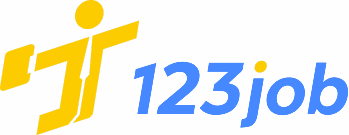Mô tả công việc
Scope and Responsibilities:
***Requirement Elicitation and Analysis:
Use various techniques such as use case modeling, process modeling, and data modeling to capture and define requirements.
Analyze and document business processes, workflows, and system interactions to understand current state and identify improvement opportunities.
Conduct interviews, workshops, and meetings with stakeholders to gather and clarify business requirements.
***Requirement Documentation and Management:
Collaborate with stakeholders to review and validate requirements, incorporating feedback and updates as necessary.
Document business requirements in a clear, concise, and structured manner using tools like use cases, user stories, requirement specifications, and acceptance criteria.
Manage and prioritize requirements using requirement management tools, ensuring traceability and alignment with project objectives.
***Communication and Collaboration:
Translate business needs into technical requirements and specifications, effectively communicating complex concepts to both technical and non- technical audiences.
Work closely with project managers, developers, testers, and other stakeholders to ensure alignment of goals, priorities, and expectations.
Serve as a liaison between business stakeholders and IT teams, facilitating communication and ensuring mutual understanding.
***Solution Design and Validation:
Participate in solution design sessions, providing input based on a deep understanding of business requirements and constraints.
Validate proposed solutions against business needs, ensuring they address the root causes of business problems and deliver expected benefits.
Collaborate with architects and technical leads to ensure solutions are scalable, maintainable, and aligned with enterprise architecture standards.
***Testing and Quality Assurance:
Support testing efforts by reviewing test cases, participating in testing activities, and triaging defects.
Define test scenarios and acceptance criteria based on business requirements and user stories.
Conduct user acceptance testing (UAT) with business stakeholders, ensuring solutions meet their needs and expectations.
***Training and Support:
Develop training materials and deliver training sessions to end- users on new systems, processes, and functionalities.
Provide ongoing support to end- users, answering questions, troubleshooting issues, and facilitating resolution.
***Continuous Improvement:
Stay abreast of industry trends, best practices, and emerging technologies relevant to business analysis and IT.
Monitor and evaluate the effectiveness of implemented solutions, gathering feedback and identifying areas for improvement.
Proactively identify opportunities to streamline processes, enhance system capabilities, and drive innovation.
Daily Activities:
Analyze and refine business requirements, documenting them in requirement management tools.
Conduct stakeholder meetings to discuss project status, gather requirements, and address concerns.
Document lessons learned, best practices, and insights gained from project experiences.
Engage in professional development activities such as training courses, workshops, or networking events to enhance skills and knowledge.
Assist with user story grooming, ensuring stories are well- defined, estimated, and ready for development.
Develop and deliver training sessions or materials for end- users on new features or systems.
Collaborate with development teams to clarify requirements, provide context, and resolve issues.
Participate in Agile ceremonies such as sprint planning, daily stand- ups, and sprint reviews.
Review and provide feedback on design documents, user interface mockups, and technical specifications.
Coordinate and conduct UAT sessions with business stakeholders, capturing feedback and validating solutions.
Outputs:
***Requirements Documentation:
Process Models: Diagrams depicting current and future state business processes, workflows, and interactions.
Requirement Specifications: Detailed documents outlining functional and non- functional requirements, including use cases, user stories, business rules, and acceptance criteria.
Data Models: Diagrams illustrating the structure, relationships, and attributes of data entities within the system.
Requirement Traceability Matrix: Matrix linking requirements to business objectives, system components, test cases, and other related artifacts.
***Communication Artifacts:
Stakeholder Communication Plan: Plan outlining communication strategies, channels, frequency, and key messages for engaging with stakeholders throughout the project lifecycle.
Meeting Minutes: Summaries of discussions, decisions, and action items from stakeholder meetings, workshops, and requirement elicitation sessions.
Presentation Materials: Slides and visuals used to communicate project updates, requirements, and recommendations to stakeholders and project teams.
***Solution Design Artifacts:
Integration Specifications: Specifications outlining how different system components and third- party systems will integrate and exchange data.
Solution Architecture Documents: High- level and detailed descriptions of the proposed system architecture, components, interfaces, and technologies.
User Interface Mockups: Wireframes, prototypes, or design mockups illustrating the layout, navigation, and functionality of user interfaces.
***Testing and Quality Assurance Artifacts:
Defect Reports: Documentation of identified defects, including descriptions, severity, steps to reproduce, and resolution status.
Test Plans: Documents outlining the approach, scope, resources, and schedule for testing activities, including unit testing, integration testing, and user acceptance testing.
Test Cases: Detailed scripts or scenarios describing steps to be executed during testing, along with expected results and pass/fail criteria.
***Training and Support Materials:
FAQ Documents: Frequently asked questions and answers addressing common queries and issues related to the system.
Training Guides: Manuals, tutorials, or user guides providing step- by- step instructions for using the system or specific features.
Training Presentations: Slides or materials used during training sessions to educate end- users on system functionality, best practices, and tips.
***Documentation and Knowledge Sharing:
Knowledge Base Articles: Articles or wiki entries documenting system features, configurations, troubleshooting steps, and tips for system administrators and end- users.
Best Practice Guides: Documents outlining recommended approaches, techniques, and tools for conducting business analysis and project management.
Lessons Learned Reports: Summaries of project successes, challenges, and key takeaways to inform future projects and improve processes.








